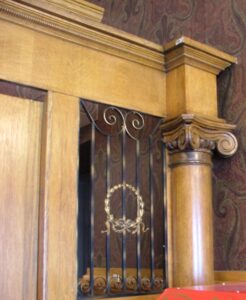What is it? Answer
The Collapsible Drinking Cup
Did you or do you still use a collapsible drinking cup?
This is one is aluminum with no markings, but often the lid had a design on it.
Collapsible telescopic cups have been a handy thing to have when traveling or camping since the late 1800s. The first collapsible telescopic “pocket” cup was invented by John Lines of Waterbury, Connecticut, for Scovill Manufacturing Company of Waterbury, Connecticut, U.S. Patent No. 577,764 issued on February 23, 1897. https://www.collectorsweekly.com/stories/118969-travel-folding-cup-with-case












